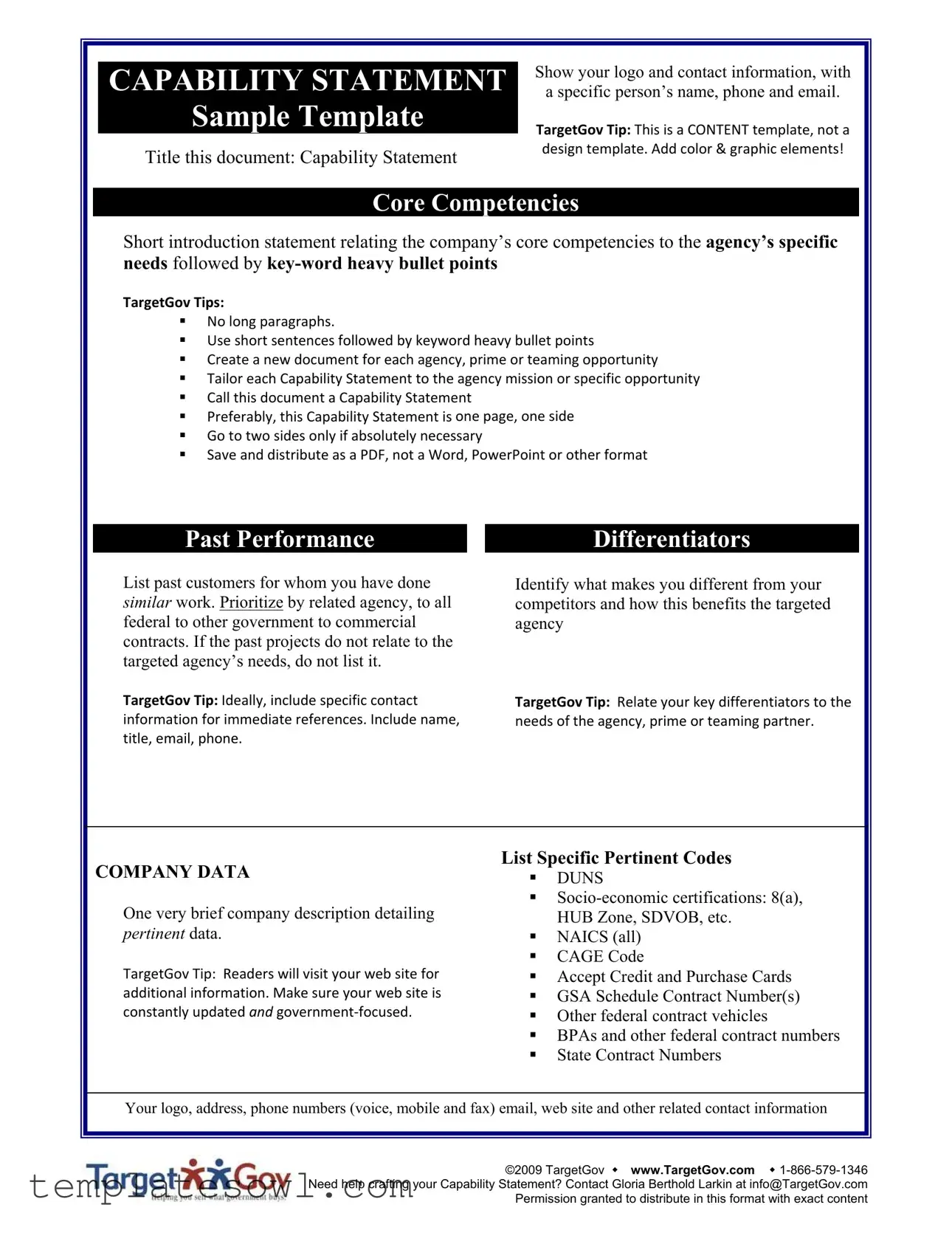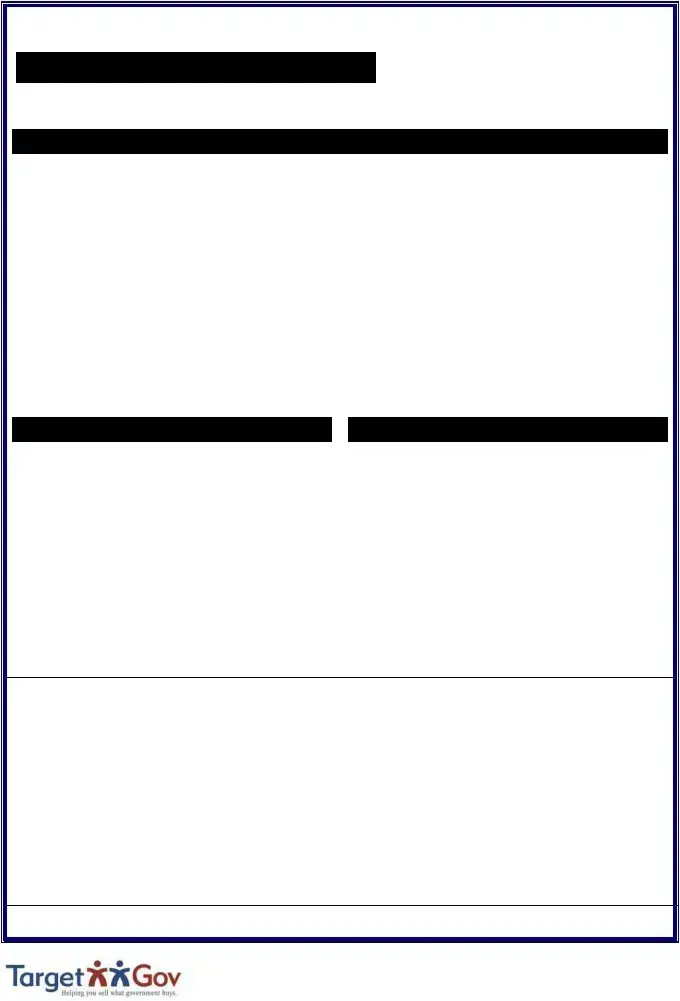What is a Capability Statement?
A Capability Statement is a concise, one-page document that outlines a company's core competencies, past performance, differentiators, and relevant company data. It is typically used to market services or products to government agencies and potential partners.
What should be included in a Capability Statement?
Your Capability Statement should include the following sections: Core Competencies, Past Performance, Differentiators, and Company Data. Each section should be tailored to the specific agency or opportunity you are targeting. Don’t forget to add your logo and contact information at the top.
Why is it important to customize my Capability Statement?
Customizing your Capability Statement for each agency enhances its relevance. Each agency has unique needs, and a tailored document demonstrates your understanding of their mission and how your services can meet those requirements.
How should I format the Capability Statement?
Use a clean, professional layout with your logo, contact information, and a balanced amount of text and white space. Aim for a one-page format, and if you must go to two pages, be sure that it adds value. Save and distribute the final document as a PDF.
What are differentiators, and why are they important?
Differentiators are the unique qualities that set your company apart from competitors. This section should clearly convey how your strengths benefit the targeted agency. By highlighting relevant differentiators, you can create a compelling case for why they should choose your services.
How do I list past performance accurately?
List past customers for whom you have provided similar services, prioritizing by the relevance to the agency you’re targeting. Include specific contact information whenever possible to allow for immediate verification. Ensure that all past performance listed is pertinent to the agency's needs.
What contact information should I include?
Your Capability Statement should feature detailed contact information, including a specific person’s name, phone number, email address, and any relevant website links. It’s crucial to ensure that this information is accurate and up-to-date.

